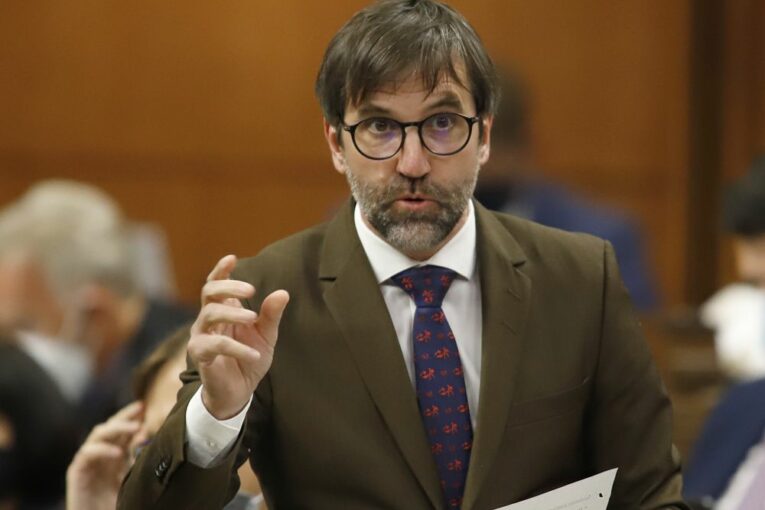
[ad_1]
Ottawa has set its sights on the Canadian economy’s largest source of greenhouse gas emissions as it sets about determining exactly how Canada will reach net-zero by 2050.
The federal government announced that it will begin consultations on the design of a proposed cap on emissions from the oil and gas sector — a measure that is unlikely to be welcomed by industry, but one that fulfills a pledge made by Prime Minister Justin Trudeau in last year’s election.
In a discussion paper released Monday by Environment and Climate Change Canada, the federal government outlined two options for a cap on oil and gas emissions, which the federal governments has previously said must be reduced by 42 per cent from 2019 levels by the end of the decade.
“Establishing a cap on oil and gas emissions is one of the key commitments of our Government’s Emissions Reduction Plan,” Environment Minister Steven Guilbeault said in a statement. “With this cap, we will work with industry, provinces, Indigenous groups, civil society, and others to take action on drawing down emissions from oil and gas production.”
The two options floated by the federal government are a sector-specific cap-and-trade system or a modified carbon-pricing system that could see the oil and gas industry pay a higher carbon price. However, the government didn’t say what the specific emissions cap will be, or did it hint at the trajectory of reductions that will be required.
While both industry and government are aligned on the end goal of net-zero by 2050, there is significant disagreement on the pace and the approach to reducing emissions.
The transformative changes in process and technology required for the oil and gas sector to drive down emissions will take time, experts said.
“In the short run there’s sort of limited things that can happen,” said University of Calgary economist Blake Shaffer. “If the (emissions) trajectory is a steep decline early and then flattening, it doesn’t leave many options other than some production cuts. If it’s that sort of slope that goes wider and then slopes down to the end, that leaves room for the technology to catch up and get us there with less economic cost.”
The head of the Canadian Association of Petroleum Producers (CAPP) said both proposals outlined by the government so far could deter investment in the sector at a moment when Europe is grappling with an energy crisis.
“As presented, both emissions cap options have the potential to limit oil and natural gas production in Canada by adding regulatory burden and eliminating options for economy-wide cooperation on emissions reductions,” CAPP president Lisa Baiton said in a statement. “Imposing an emissions cap solely on Canada’s oil and natural gas sector, as the paper proposes, will likely drive energy investment into other countries who may not share our high environmental and human rights standards.”
“As our allies and trading partners are grappling with an energy crisis, now more than ever Canada needs to strive to create the right environment to attract investment, so we become a preferred supplier of the most responsibly produced oil and natural gas in the world.”
Input on the options to manage the cap will be accepted until Sept. 21, with the final plan expected to come in early 2023.
When it comes to the design of the cap, the federal government said one option would involve the implementation of a new cap-and-trade system on the oil and gas sector in isolation. The total emissions allowed would be divided into individual allowances which will be allocated to specific companies mainly through an auction. Companies that don’t buy enough allowances to cover their emissions will have to buy allowance credits from other oil and gas companies that bought more than they need.
The funds raised from the auction would be recycled to programs that help the sector cut emissions.
The second option would modify the industrial carbon price already applied to the oil and gas sector — possibly by hiking the price itself if needed, but with the aim of ensuring the emissions from the oil and gas industry itself fall by limiting the trading of carbon credits to the sector.
Companies can currently reduce the carbon price they pay by buying credits from others that produce less than their emissions limit. The modified plan would allow them only to buy credits from other oil and gas companies — not from other industries.
With additional reporting from The Canadian Press.
• Email: [email protected] | Twitter: mpotkins
[ad_2]
You can read more of the news on source
